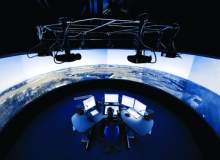
For sparsely populated countries, small airports provide a vital link between remote communities and the big urban centres. They are especially important in countries such as Sweden, where harsh winters often make air the only feasible means of transportation. These regional airports, though vital, pose a number of practical and economic problems.
They often deal with just a handful of flights per day, yet require the same trained personnel and infrastructure, and incur the same fixed costs, as a busier airport. At a time when airlines are fighting to keep their cost bases down, regional airports are struggling to offer a proposition competitive enough to attract new business. In addition, particularly in the case of the Nordic countries, the need to be environmentally aware has made governments increasingly less willing to build new airport infrastructure, even as the volume of global air traffic increases.

Discover B2B Marketing That Performs
Combine business intelligence and editorial excellence to reach engaged professionals across 36 leading media platforms.
New technology from defence and security company Saab, which received final approval from the Swedish Transport Agency over the summer, could make a big difference.
Known as Remote Tower, this solution integrates a number of technologies such as high-definition cameras, pan-tilt-zoom cameras, surveillance and meteorological sensors, microphones and signal light guns. These are installed at the airport and feed data back in real time to a Remote Tower Centre, where operators use the information and a live video feed to remotely control ingoing and outgoing flights. This allows multiple airports to be controlled from a single centre, greatly reducing the need for onsite infrastructure and personnel.
Remote Tower – origins of the idea
In 2008 Saab was approached by LFV, a Swedish provider of air navigation systems, to look into ways of reducing the cost of airport operations. The two formed a partnership, the former providing infrastructure expertise and funding, the latter operational know-how.

US Tariffs are shifting - will you react or anticipate?
Don’t let policy changes catch you off guard. Stay proactive with real-time data and expert analysis.
By GlobalDataThe partners opted to develop the technology at former military base Angelholm Airport in the south of Sweden, with the remote operating headquarters set up at the Scandinavian air traffic control training centre in nearby Malmo. This ensured that they received feedback from an array of controllers with different degrees of experience. According to Per Ahl, Saab’s vice-president of air traffic management, the project threw up a number of technical challenges that made it particularly fun to work on.
New research by the University of Lincoln aims to design a new system to generate the most efficient routes.
"We picked them [the problems] off one by one," he tells airport-technology. "Initially it was things like how to protect the infrastructure in case of a snowstorm and strong winds. And then the focus became how to shift all that information. The network at the time was only running at 32 megabits per second – we are using HD cameras and each camera produces at 100 megabits… At the final validation, we had latency and delay down to less than one second – that was the aim, to have a real-time operation."
At the remote operation tower, the company set about building a virtual environment that was as close as possible to a real air traffic control tower – a 360-degree-visibility dome with the same landing systems, cameras that displayed the airfield as it is in real life, and even varying degrees of light and shade caused by the movement of the sun. Getting this right was not easy and took a lot of back and forth between the engineering team and the controllers.
"The feedback at the beginning was, ‘hey, this is not what I see when I’m standing in the tower’", Ahl recalls. "So we went back to the engineering team and made some changes, then back to the controller, then back again to the engineering team and we started to see things work. By the time of validation in 2009/2010, we actually ran the whole operation from the remote site and the feedback we got from the controller was that it was absolutely working."
Putting remote technology into practice
Although no laws or regulations had to be changed for remote tower technology to be deployed, its novelty made the regulator cautious. Saab realised the importance of getting the Swedish Transport Agency involved from day one and talking them through the step-by-step development of the project. Since final regulatory approval was granted in June, Örnsköldsvik Airport on the northeastern part of Sweden’s Baltic coast has become the first in the world to be remotely controlled in this way, with nearby Sundsvall Airport starting up remote operations soon after.
The Saab team is also working on two sites in the inhospitable far north of Norway and at Alice Springs Airport in central Australia, where a non-operational evaluation was carried out in July. The remote tower center in that case is located in the southern city of Adelaide, a considerable 950 miles away from the airport. In Ahl’s view, the economic and environmental benefits of remote tower technology could make it truly disruptive.
"There has been the same business model in place for the last 100 years almost," he says, "certainly, at least since the Second World War. We are in a new era – we can use new technology and apply the right rules and regulations to increase traffic and reduce the environmental footprint. I often compare this with the telecoms industry. Things didn’t change for a long time and then suddenly, 1 5 years ago, everyone agreed on the GSM (global system for mobile) standard and it changed things completely. This could do a similar thing for air traffic."





